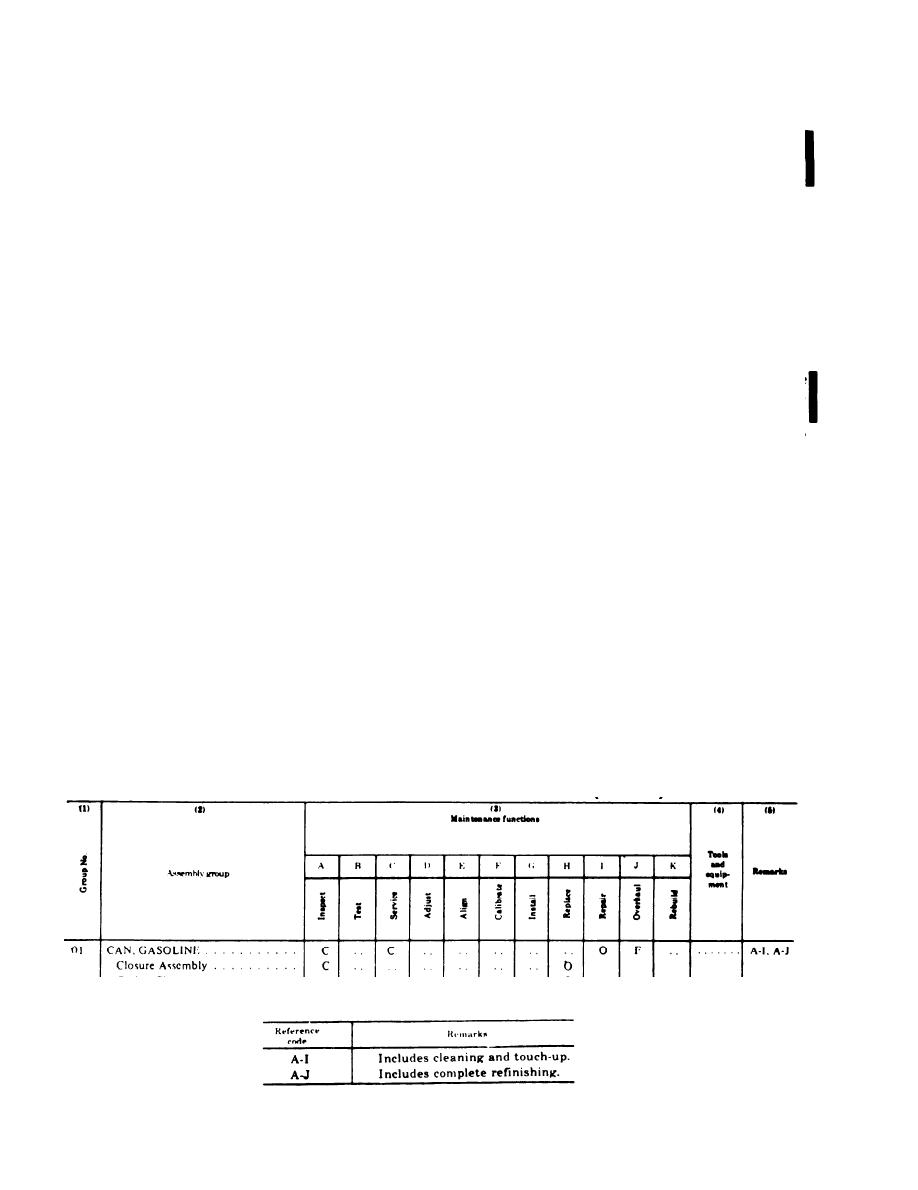 |
|||
|
|
|||
|
Page Title:
Section V. MAINTENANCE ALLOCATION CHART (PART 1) |
|
||
| ||||||||||
|
|
 TM 10-7200-200-13
mechanically, it should be free of excessive grease
bly should be replaced as necessary.
and oil. Mechanical cleaning methods may include
f. Leak Testing. Before the cans are painted or
buffing or blasting. Buffing consistsof cleaning bqy
treated with preservative oil, they will be tested for
means of rotating brushes or rotating the can
leaks. Cans with leaks in the body of the can will be
against con verging brushes. Blasting consists of
scrapped. The presence of leaks can be determined
pressure spray ing the can with sand or grit or similar
by either of the following tests:
material. The operator must determine the extent to
(1) Water tank test. Cans are subjected to internal
which blasting is feasible without excessive metal
air pressure and completely submerged in clean
removal.
water. Air bubbles emitted from cans indicate the
c. Cleaning Interior. Before cans undergo further
presence and location of leaks.
reconditioning, clogged vent tubes will be cleaned by
(2) Air pressurre test. Cans are subjected to
prodding or by applying air pressure. Unlined cans
internal air pressure of 7-to 9-psi for a period of 45
will be thoroughly cleaned by washing with a strong,
seconds. A drop in air pressure, as indicated on an
hot, alkali solution or a suitable detergent solution.
accurate pressure gage during the test period, shows
This process will be continued until all loose rust,
the presence of leaks.
scale, or other foreign matter is removed. If the cans
are lined and the interior coating is broken, blistered,
g. Repairing Leaky Can. Cans with leaks in the
or loose, the interior linings must be stripped
body will be scrapped. Closure assembly leaks will be
repaired.
chemically and the cans must be cleaned thoroughly.
h. Painting Exterior. After cans have been
If more than very light rust remains after cleaning of
either lined or unlined cans, the rust should be
repaired, thoroughly cleaned, leak tested, dried, and
removed with solutions containing dilute phosphoric
rust freed, exteriors will be painted with one coat of
rust-inhibiting enamel. Before cans are painted,
acid.
d. Rinsing and Drying. Each can will be ade-
plugs must be inserted and hand tightened. Paint
will be applied uniformly by spray. Cans will be either
quately rinsed to remove cleaning solutions. Clean
hot water, maintained at a temperature of 150F. will
heated to a temperature of 250F and dried in a
suitable drying oven immediately after painting, or
be used for rinsing. After the can is rinsed, it will be
baked at 250 F for 45 minutes or an equivalent
siphoned free of excess water and heated for a period
time-temperature cycle.
sufficient to vaporize all remaining moisture. The
i. Prpreventing Interior rust. When cans have cooled,
can will be purged with air, preferably hot, to
remove the plugs and spray the interior of each can
eliminate all excess vapor. It must be above room
with preservative oil injected under pressure for
temperature and free" of all moisture and residue at
the completion of drying. Completion of drying can be
complete atomizing. No excess spray will remain to
determined by a simple test. Hold a cool glass over
collect on the bottom. All plugs with gaskets in place,
should be made wrench tight immediately after
the can opening; if condensation forms on the glass,
preservative oil has been injected, All air lines used
the can is not sufficiently dry.
for spraying preservative oil will be suitable trapped
e. Replacing Parts. Plugs for cans should be fitted
to prevent condensate in the cans.
with new synthetic rubber gaskets. Closure assem-
Section V. MAINTENANCE ALLOCATION CHART (PART 1)
Section V. REMARKS (PART II)
2-6
Change 1
|
|
Privacy Statement - Press Release - Copyright Information. - Contact Us |